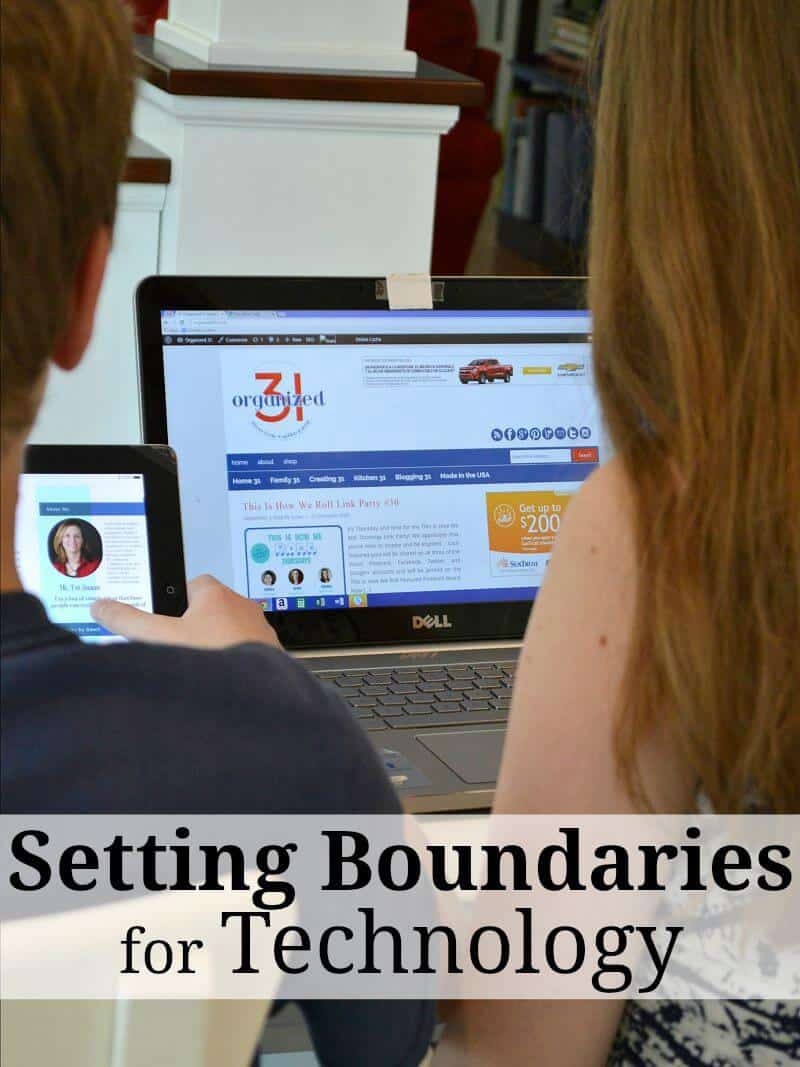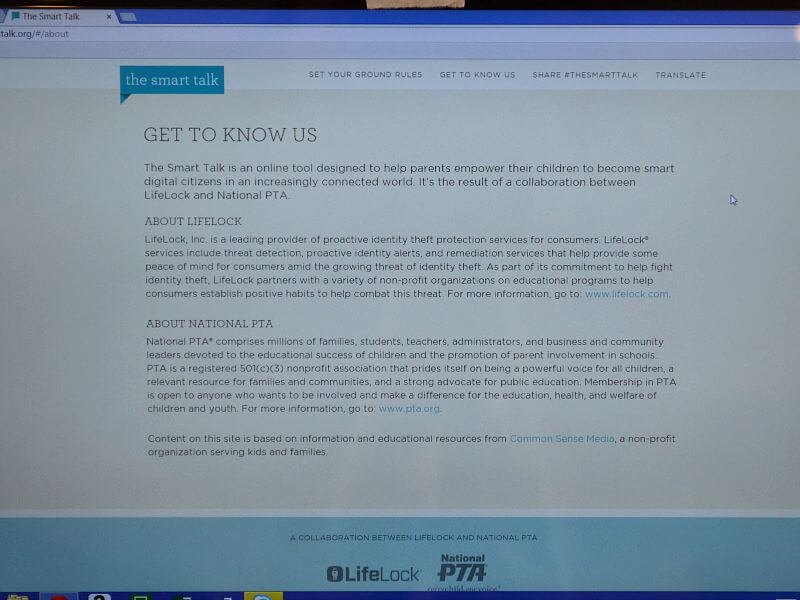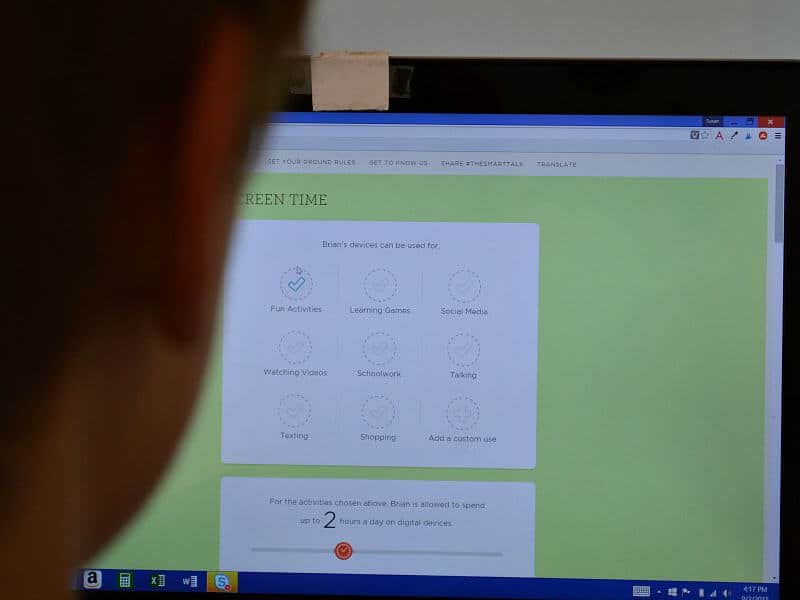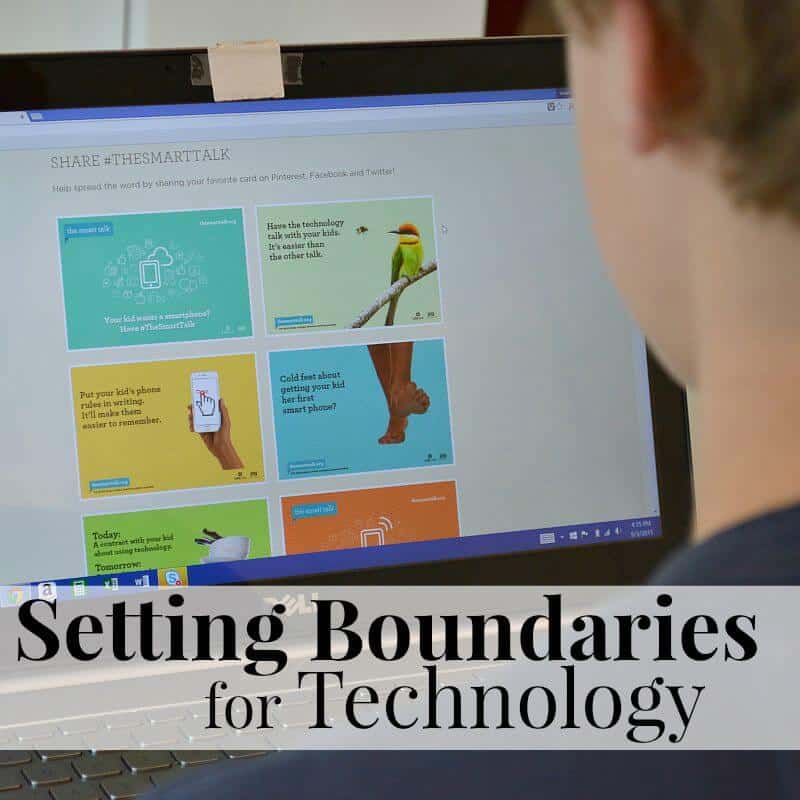Setting Boundaries for Technology with Your Children
This post may contain affiliate links provided for your convenience. We earn commissions if you shop through the links on this page. I am also an Amazon Associate and earn from qualifying purchases Read my full disclosure policy.
I’m a bit old fashioned when it comes to technology. I believe that it’s important for parents to set boundaries on their children’s use of technology. Gasp! I know. I’m not so old fashioned that I don’t embrace the communication advantages (like staying in touch with your college student) and access to infinite information (and blogs) that technology makes possible. But as a parent, I’m very aware of the need to parent as a verb when it comes to how my children use technology. I believe it’s critical that parents make setting boundaries for technology a focus of their parenting. Our goal is to raise children with healthy digital habits and that takes work on our part as parents.

As the mother of three and a parent educator, I’ve always worked to be active in parenting my children. In today’s world, being an active parent means teaching your children how to use technology responsibly as the powerful tool that it is. My children are now 12, 16 and 19 years old. We’ve found these tips useful in teaching our children how to use technology safely and responsibly.
Setting Boundaries for Technology
Purposefully Choose What Age Your Child Will Start Using Technology
You would not hand your 5 year old keys to the family car, yet some parents allow their young children free access to technology, texting and the internet. As a parent, you need to consider your child’s developmental age, behavior and need for access to technology before you give them access. Take the time to be purposeful about when your child will be allowed to use each form of technology and social media. Stand strong to the pressure of “everyone else has a form of technology or social media” and choose what is right for your family and child.
Start Your Child Slowly and Have Them Earn the Privilege
When you decide that your child will start using technology and social media, start them out slowing. Let them start with one thing at a time. Limit the time and locations that they can use it until they’ve proven that they can be responsible in their use. Using technology and social media is a privilege not a right (and the world won’t really end if they don’t get to use it when they want to). Make sure your child understands that using technology is a privilege they can enjoy as long as they follow the family rules and use it responsibly.
Educate Your Child about Responsible Use of Technology
Take the time to educate your child about the risks and responsibilities of using technology. Consider your child’s developmental age and temperament. You should educate them on the risks but not scare them (fear isn’t helpful, fear only lead to poor decisions). The goal of educating your child is so that they begin to understand why they need to be responsible and follow your rules and boundaries. You are still the parent and still the one ultimately responsible for ensuring your child’s safety, but educating your child will help them understand why they should follow the rules.
Work with Your Child to Set Boundaries
Setting boundaries is a two-step process. The parents first decide what boundaries you are comfortable with. Consider factors such as:
- Where will the technology be used? Consider limiting use to the main floor or areas of your home.
- When will technology be used? Consider limiting the times of day that it can be used and only after homework and chores have been completed.
- How long can technology be used? Consider placing time limits on how many minutes or hours a day your child can use technology.
After you’ve established your ideas about what boundaries should be set, then you should sit down with your child and set boundaries together. It’s important to set the boundaries together so that your child will buy in and be more like to follow the guidelines. Talk with your child (with not at) and really listen to their ideas. But remember, you are always the final determination of boundaries.

Lifelock, Inc. and the National PTA® have created a free resource to help parents have clear conversations with their children about using technology and setting family boundaries together on that use. The digital tool, The Smart Talk, is designed to empower parents and families to make smarter, safer choices about technology and online use to help raise responsible digital citizens. It provides an interactive experience guiding parents and kids through a series of questions and conversations on topics such as safety and privacy, screen time, social media, apps and downloads, texting and calling, reputation and respect, and online videos and cameras.

The Smart Talk makes it easy for you to sit down with your child and establish technology use boundaries unique to your family and your child. You and your child will answer a series of questions together. Those questions allow you to personalize the agreement to your child and your family’s choices. It also is specific to different technology, such as cell phone or screen time, and social media, like Twitter or Facebook, and more. The Smart Talk is useful in that it can be adapted to your individual child and that child’s changing needs as they grow.
The answers that you and your child provide result in your family agreement (complete with your child’s name and your name), which you can print out and place on your fridge, laptop or other area as a reminder of your agreed upon boundaries.
Monitor Your Child’s Use of Technology
Once you’ve established the boundaries on technology use, be sure to continue to monitor your child periodically and let them know that you’ll be monitoring them. Establishing boundaries is an on-going process.
Broaden Boundaries as Your Child Proves Responsible
As your child matures and proves themselves responsible in using technology and following your family agreement, allow those boundaries to broaden. Let your child know that the they have proven themselves ready for more responsibility (you want them to understand that responsible digital use = more digital use). Sit down together with your child, talk through The Smart Talk agreement again and establish new broader boundaries. It’s important that you help them learn responsible use of technology slowly in manageable amounts that build on each other so that you can send them off to life as a digitally responsible adult.

What tips would you add to help in setting boundaries for technology with your child? Be sure to visit The Smart Talk site to check out online safety resources and create your own personalized family contract to encourage healthy digital habits.
I was selected for this opportunity as a member of Clever Girls and the content and opinions expressed here are all my own.
More Parenting Tips
Parenting Tips from a Mother of 3 and a Parent Educator

I’m a mom of 3, a veteran, military spouse. I’ve moved into 20+ homes all around the world. My passion is helping busy people make the space and time for what’s really important to them. Learn more about Organized 31 and me.







HI Susan – What a great article! Every parent and child is different, and this spells it out how to teach your children online responsibility and boundaries. We have a contract we use with Stepson which will be renewed this year with the new school year. Thank you for the education that is much needed! Hugs, Holly
Stepson is one lucky guy that his parents take the time to use a contract with him, Holly. High five.
Susan, I have never heard of this site. I think it is so important to sit down and talk with your children about all of the good and bad things technology brings. It is so easy for an innocent to get wrapped up in something bad.
It is much too easy, isn’t it, Cynthia. It’s important that we keep our children safe and teach them how to be digitally responsible.